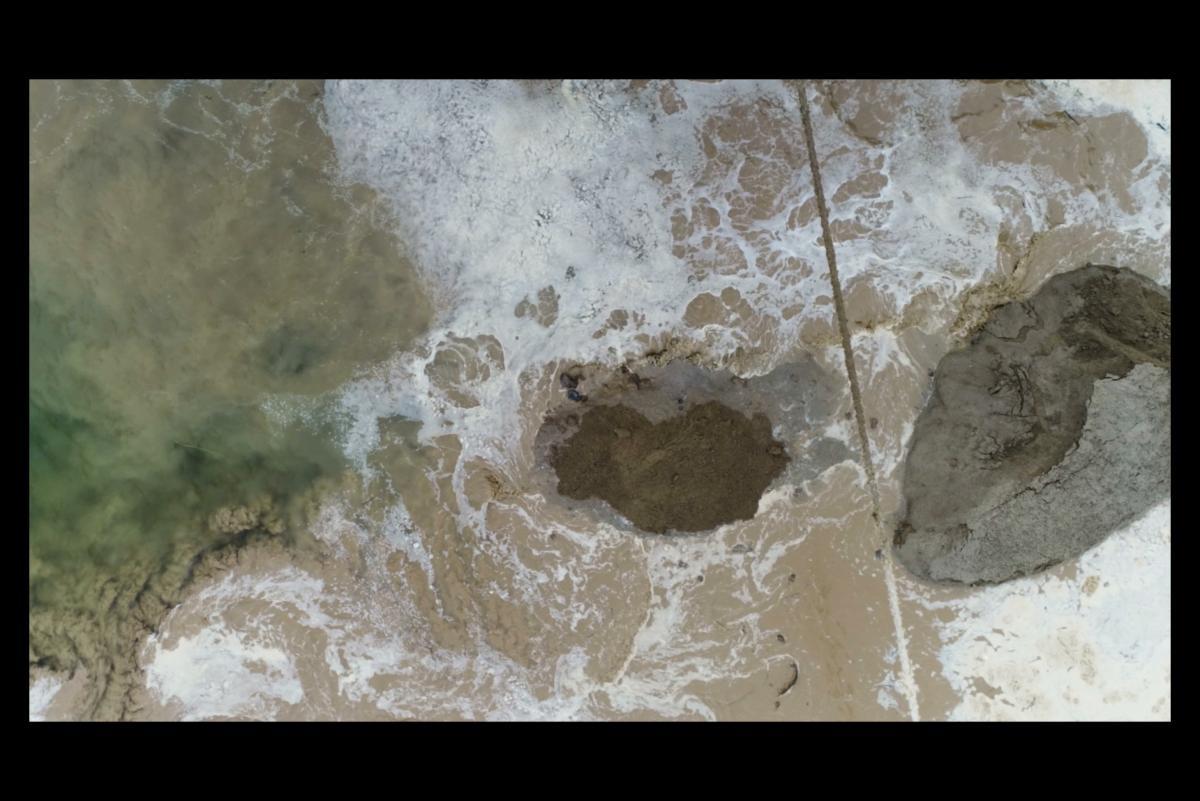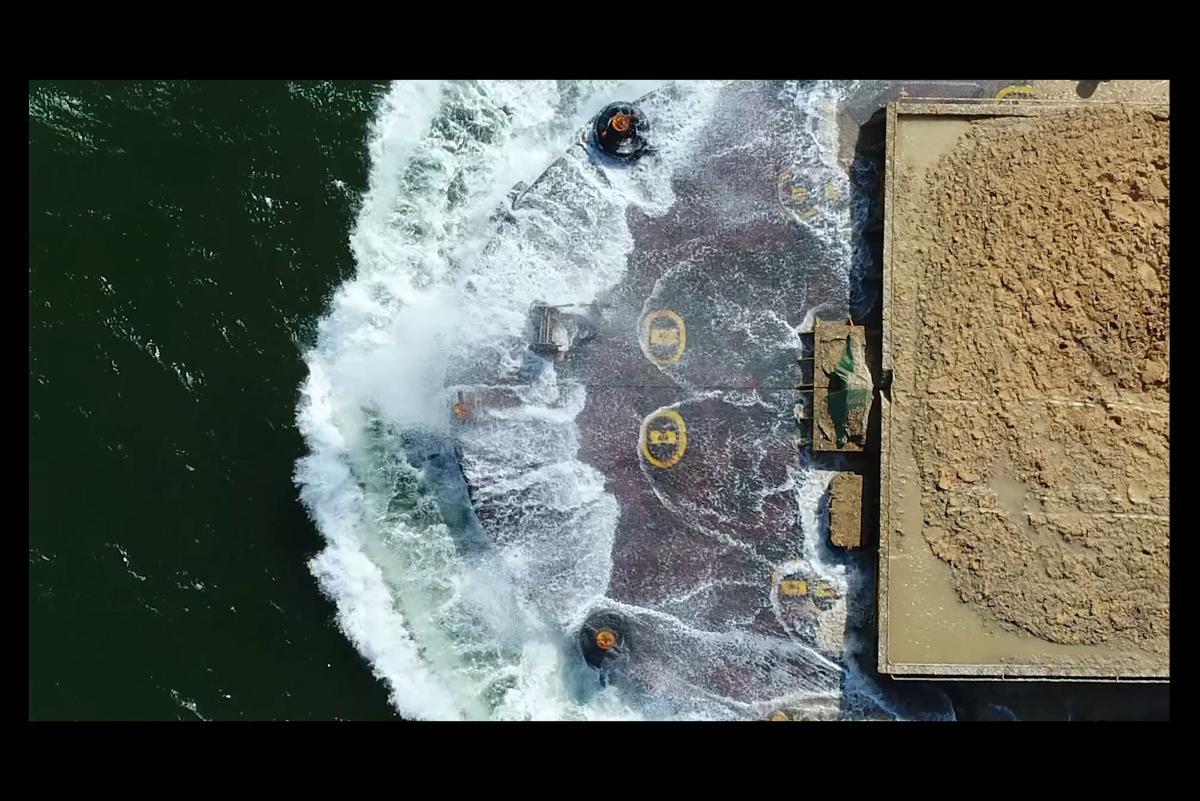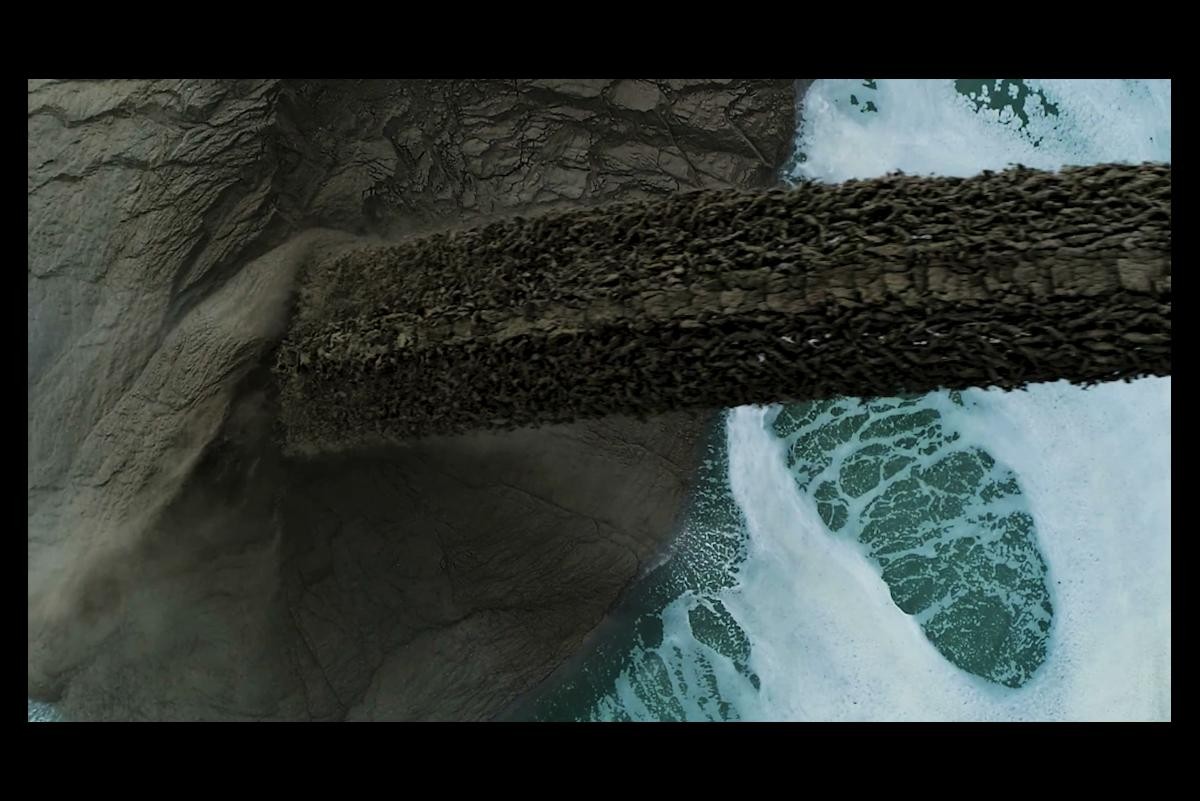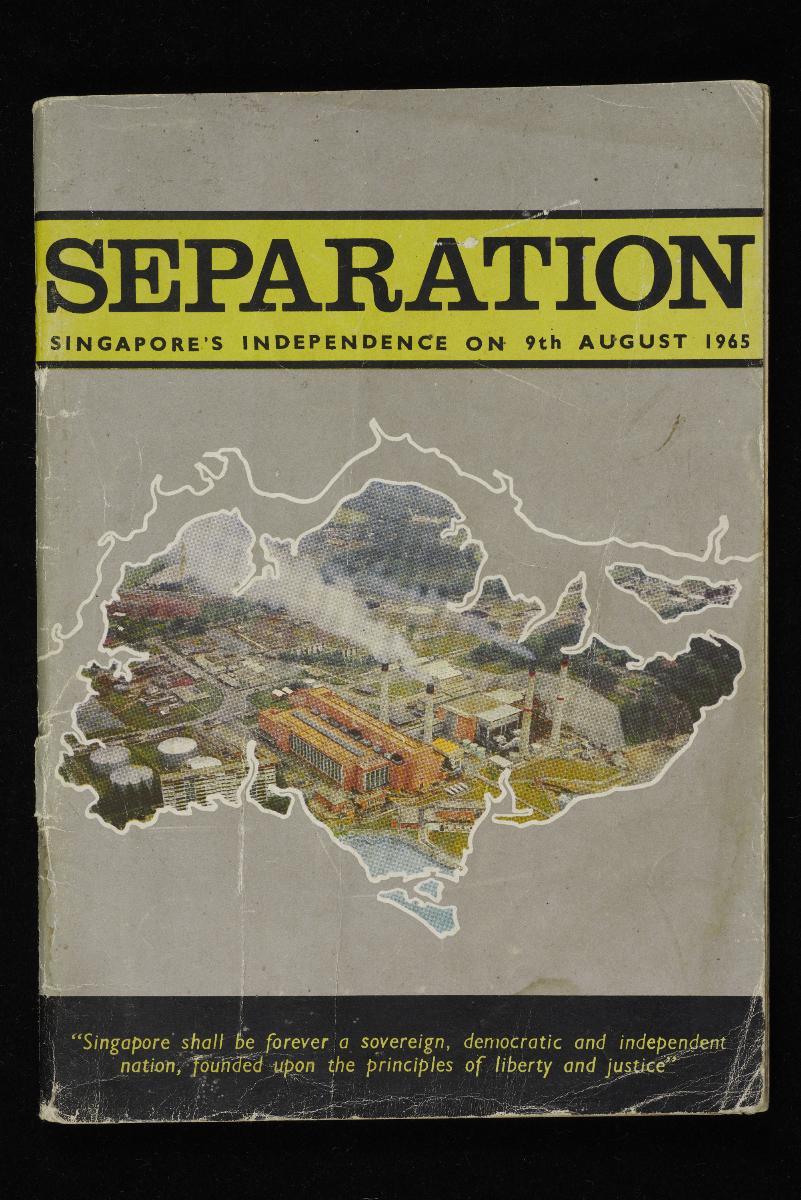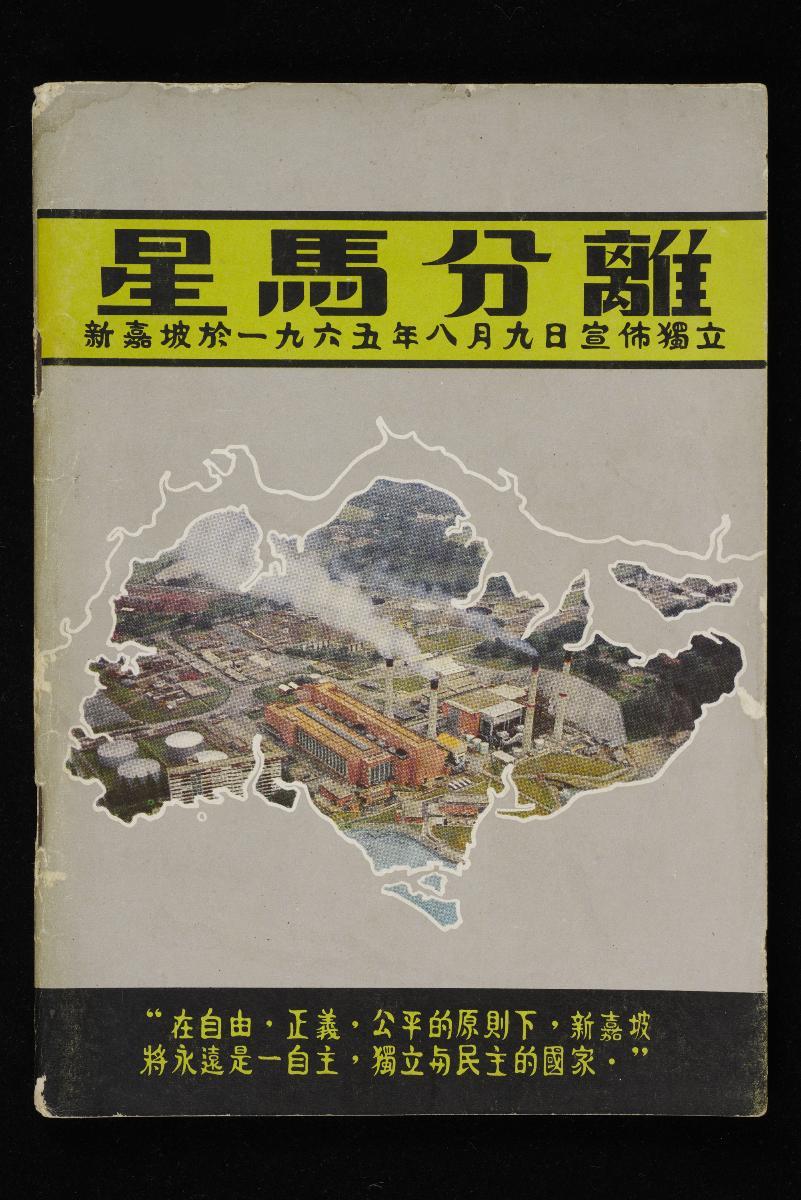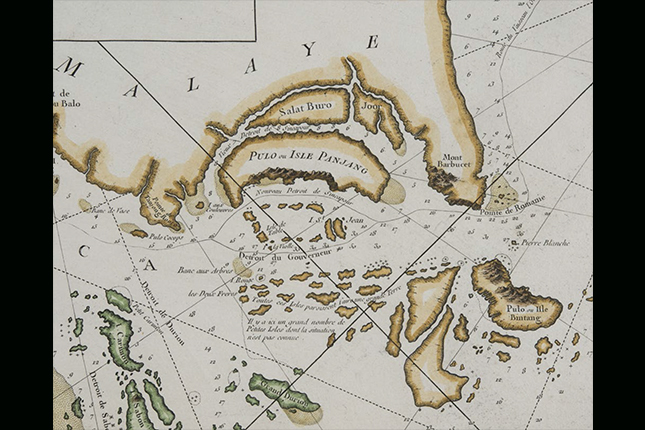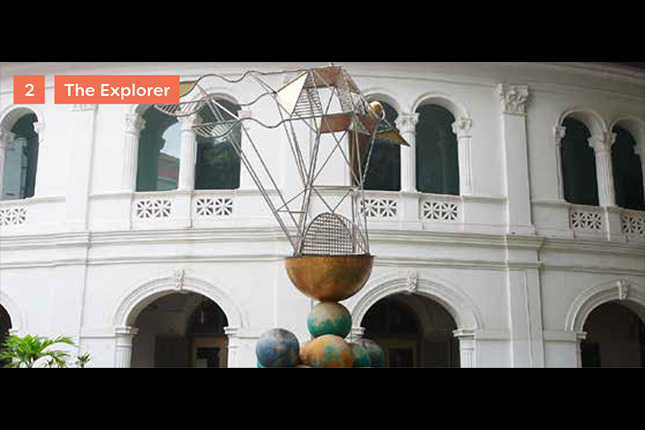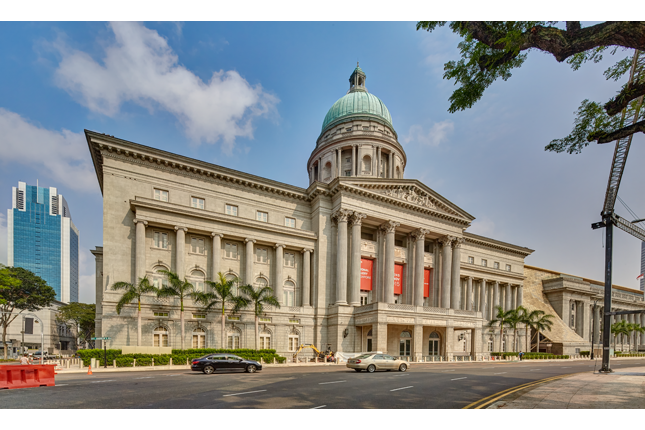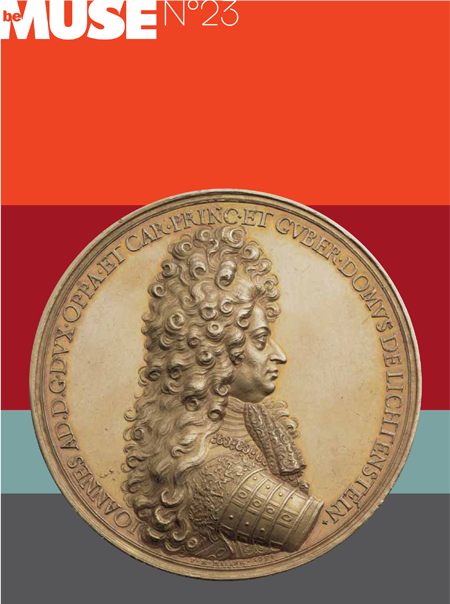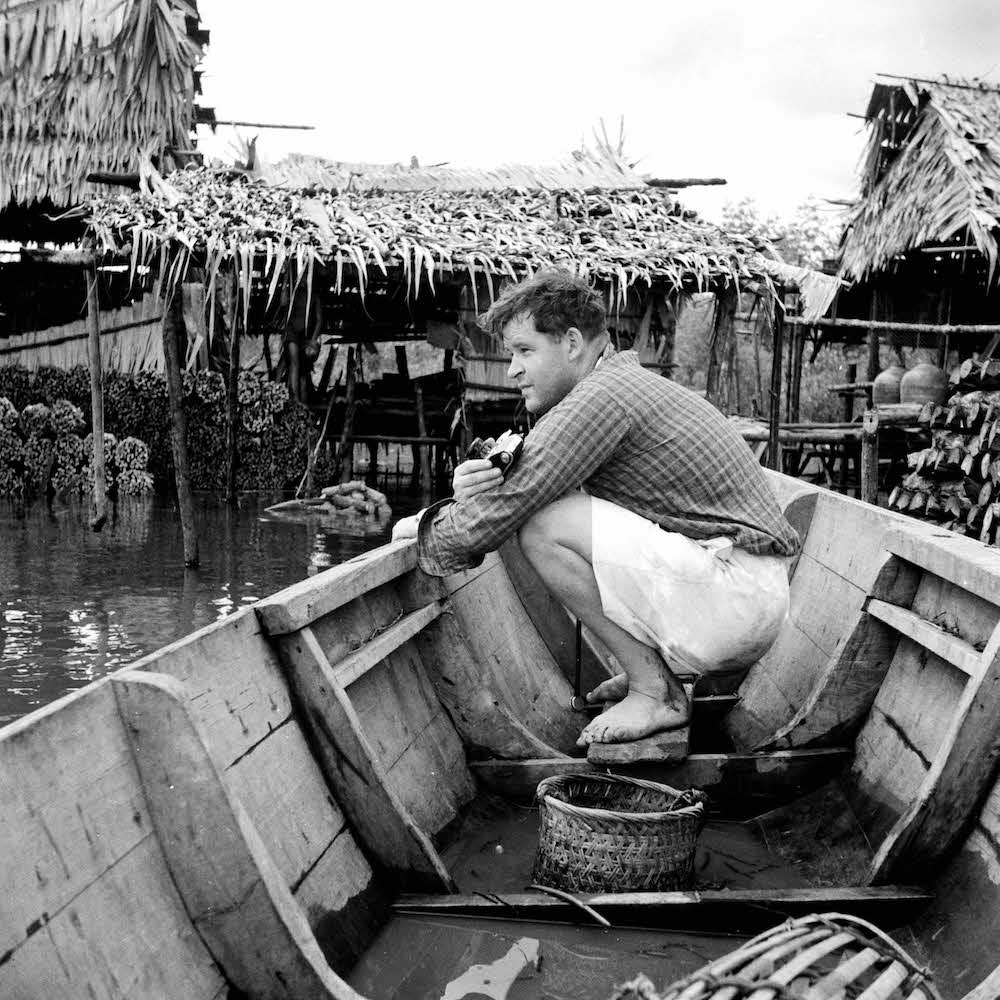Sea State 9 marks the concluding chapter of Charles Lim’s project that has explored Singapore’s relationship with land and sea and the artist’s greatest shift from representing the literal to the abstract. The work is the product of Charles Lim’s research into the Foreshores Act, an act originating from 1872 but updated as recently as 1987 “to provide for reclamations and to validate and facilitate leases or grants of foreshores and submerged lands.” In its initial presentation of works from this final chapter, Proclamation (drop), Proclamation (drag), and Proclamation (pour), amalgamates the concrete and physical processes of land reclamation, with the neigh-magical ‘proclamations’ that serve to officiate its creation. Taken with drone footage, each video captures a specific method used in land reclamation in Singapore. Presented on high-luminosity screens the videos are mesmerizing, yet in the precise moment where the sand that has been dropped, dragged, and poured on breaks the surface of the sea, and water is transformed into new land, one cannot help but feel the inaccuracy of the use of the term ‘land reclamation’ in describing what was never there to begin with. In this regard, one must turn to the other verb in each of the artworks’ titles to make sense of such a conundrum. ‘Reclaimed’ land constitutes some 30% of Singapore’s total landmass at present, and the county continues to grow at a steady rate. In Sea State 9: Proclamation, it is that which is not presented upon the video screens that make land what it is – for even when the sea has been made ‘land’, that new ‘land’ continues to remain as sea (a notion further endorsed it being jurisdiction under the Maritime and Ports Authority as opposed to the Singapore Land Authority), until the making of a Presidential proclamation deeming it as new land. The act of such a Presidential proclamation can best be described as a performative utterance – where what is declared not merely defines a given reality, but changes the social reality that it describes as well. And in this regard, what Lim has done in his capturing of the formation of ‘new land’, is rather showing us an alternative form of the ‘sea’ due to such a philosophical notion.




